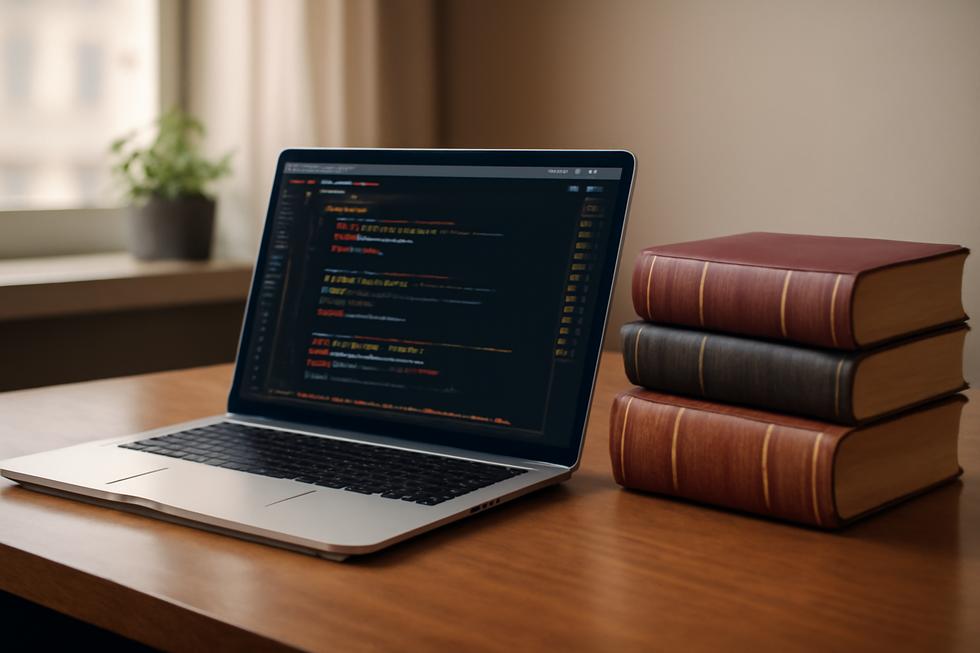Introduction
Protecting your business’s software assets starts with understanding how copyright law governs computer works. Copyright grants creators exclusive control over original works, extending robust protection to computer programs and software code as literary works. This legal safeguard enables software developers and business owners to control usage, copying, and distribution within defined limits. This article explores the fundamental legal foundations that define copyright in computing, the classification of software as a literary work, and the exclusive rights that creators hold. Additionally, it examines the critical role software licensing plays in shaping how software can be used and distributed, the duration and terms of protection under current laws, and the key regulatory bodies and resources available to guide businesses. Together, these facets form a complete picture that equips business owners with the knowledge to protect and leverage their software innovations effectively.
Tables of Contents
Chapter 1: Copyright Definition Computer: Legal Foundations and Scope
- Tracing the Legal Roots of Computer Copyright: Statutes, History, and International Norms
- Protecting Software Expression: Distinguishing Code from Ideas and Algorithms
- Economic and Moral Rights: Balancing Creator Control and Personal Integrity in Computer Works
- Licensing and Legal Boundaries: Navigating Permissions and Limits in Software Copyright
- Navigating Innovation and Control: The Impact of Copyright on Computing and Society
Chapter 2: Copyright Definition Computer: Protection of Software as Literary Work
- Foundations of Copyright Law: How Software Gains Literary Work Protection
- Navigating the Boundaries of Copyright Protection for Software Expression
- Understanding Exclusive Rights and Licensing Controls in Software Copyright
- The Intricacies of Code Expression: How Copyright Shields Software’s Technical Form
- Driving Innovation and Cultural Growth: Economic and Societal Impact of Software Copyright
Chapter 3: Copyright Definition Computer: Exclusive Rights of Software Creators
- Legal Foundations Securing Software Creators’ Exclusive Control Over Their Code
- Balancing Protection and Innovation: The Reach and Boundaries of Software Copyright
- Balancing Economic Incentives and Moral Protections in Software Copyright
- Protecting Software Innovation: The Technological and Functional Boundaries of Copyright
- Navigating the Length and Complex Challenges of Enforcing Software Copyright
Chapter 4: Copyright Definition Computer: Role and Impact of Software Licensing
- Foundations of Software Copyright: Legal Rights and Protections in Computer Programs
- Navigating Software Licensing: Enforcing Copyright Protection for Computer Programs
- How Software Licensing Drives Innovation and Revenue in Copyright Protection
- Enforcing Rights and Combating Piracy: How Software Licensing Protects Computer Copyrights
- Shaping Innovation and Competition: The Societal Influence of Software Licensing in Copyright
Chapter 5: Understanding Copyright Definition in Computer Works: Duration and Terms of Protection
- Defining the Boundaries: How Copyright Protects Software Expression but Not Ideas or Algorithms
- Understanding the Legal Timeframes and Scope of Software Copyright Protection
- Economic Impact and Licensing Dynamics of Computer Software Copyright
- Understanding Copyright Protection of Software: Distinguishing Expression from Functionality
- The Global Influence of Society and Politics on Computer Copyright Duration
Chapter 6: Copyright Definition Computer: Regulatory and Institutional Resources
- Navigating Legal Foundations and Institutional Roles Protecting Computer Software
- Licensing Agreements: Bridging Copyright Law and Practical Use in Computer Works
- Ensuring Access and Compliance: The Role of Libraries and Digital Repositories in Copyright Management
- Global Treaties and National Laws Shaping Computer Copyright Protections
- Understanding Copyright Duration and Limitations for Computer Software and Digital Works
Chapter 1: Copyright Definition Computer: Legal Foundations and Scope
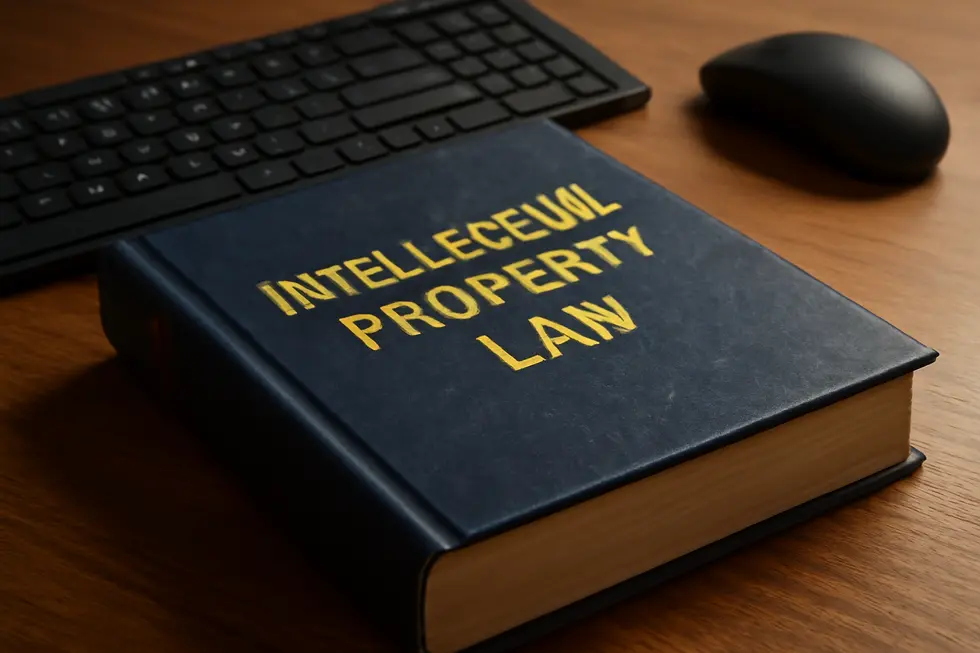
1. Tracing the Legal Roots of Computer Copyright: Statutes, History, and International Norms
Copyright law, originally designed to protect creative works fixed in a tangible form, has evolved significantly to encompass computer software as a form of literary authorship. Grounded in statutory frameworks like the United Kingdom’s Copyright, Designs and Patents Act 1988, modern law automatically grants creators exclusive rights over their work upon fixation, without requiring registration. Amendments to such statutes continue to adapt to digital and software innovations, balancing creators’ rights with public interests through exceptions like fair use. This legal architecture is further reinforced by international agreements such as the Berne Convention, which harmonizes copyright protections globally. For software specifically, these frameworks ensure creators control reproduction, adaptation, and distribution, incentivizing innovation while addressing infringement through evolving case law. For detailed statutory guidance, resources such as York University’s copyright law guide offer comprehensive insights.
2. Protecting Software Expression: Distinguishing Code from Ideas and Algorithms
Copyright protection for computer software centers on the literal source code—the specific written lines capturing an author’s original expression. This tangible medium, whether stored as digital files or physical media, is safeguarded similarly to literary works. However, this protection explicitly excludes the abstract principles underlying software, such as the ideas, methods, or algorithms embodied in the code. These elements represent concepts or procedures that are not fixed in a tangible form and thus remain outside copyright’s reach. By limiting protection to concrete expression, copyright law encourages innovation and competition, permitting others to freely employ and improve on underlying ideas. For novel software processes or algorithms that merit exclusive rights, patent protections may apply, while trade secrets cover confidential methods without disclosure. Users should recognize that while the code itself is protected, the functional concepts it implements are shareable and free for others to build upon. For a more detailed legal perspective, see the U.S. Copyright Act.
Explore copyright fundamentals for software in greater detail.
3. Economic and Moral Rights: Balancing Creator Control and Personal Integrity in Computer Works
Copyright in the computer context grants creators not only economic rights but also moral rights, both essential to fully protecting software and related works. Economic rights empower the creator with exclusive control over reproduction, distribution, adaptation, public display, and authorization, enabling them to financially benefit from their original code. For instance, developers can license software use while retaining ownership. Complementing this, moral rights safeguard the personal bond between creator and creation. These include the right of paternity—ensuring the author is properly credited—and the right of integrity, which protects against unauthorized alterations that might harm the creator’s reputation or the work’s intended expression. Importantly, moral rights usually remain with the author even if economic rights are assigned or sold. This dual framework fosters both the economic incentive to innovate and respect for authorial identity, forming a comprehensive legal shield in copyright law. For further insight into these distinctions in digital content, see the detailed explanation under Indian copyright law. More about copyright protections and related legal structures can be explored at copyright business protection. Official guidance is provided by the U.S. Copyright Act (Title 17) and international bodies like WIPO.
4. Licensing and Legal Boundaries: Navigating Permissions and Limits in Software Copyright
Licensing and Legal Boundaries: Navigating Permissions and Limits in Software Copyright
Copyright law inherently protects the original expression of computer software, granting creators exclusive rights over reproduction, adaptation, distribution, and public display. However, these rights alone do not specify how end users can interact with the software; that responsibility falls to software licenses. These legal agreements delineate permitted uses—such as installation, copying, resale, and transfer restrictions—ensuring creators control the scope of authorized use beyond copyright’s baseline protections. For example, under U.S. Copyright Law Section 117, owners may make archival or repair copies if allowed by license, but any adaptations or transfers generally require explicit permission. Government contracts further impose stringent usage and disclosure limits on licensed software. While the fair use doctrine permits limited educational or research uses, it does not override licensing terms governing most software applications. Together, copyright law and licensing frameworks balance protecting developer rights with enabling reasonable, authorized software use.
For a detailed legal framework, see U.S. Copyright Law Section 117 and explore licensing essentials at trademark2go.
5. Navigating Innovation and Control: The Impact of Copyright on Computing and Society
Copyright in computing protects the expression of original software code fixed in tangible media, safeguarding creators’ exclusive rights without monopolizing underlying ideas or functions. This distinction encourages innovation, allowing other developers to independently create similar technologies while respecting the original work’s unique implementation. As AI and machine learning increasingly rely on vast datasets, including copyrighted materials, legal frameworks must adapt to balance intellectual property protection with technological advances. Societally, copyright shapes how knowledge circulates, granting creators limited exclusive economic rights while supporting fair use exceptions for education and research. However, unauthorized use remains a persistent challenge, underscoring the need for clear compliance and ethical licensing strategies. These legal and societal dynamics influence global technology development and cultural exchange within varying enforcement regimes, demanding ongoing dialogue to sustain both innovation and creator rights. For a detailed legal perspective, consult resources such as the U.S. Copyright Act (Title 17).
Chapter 2: Copyright Definition Computer: Protection of Software as Literary Work
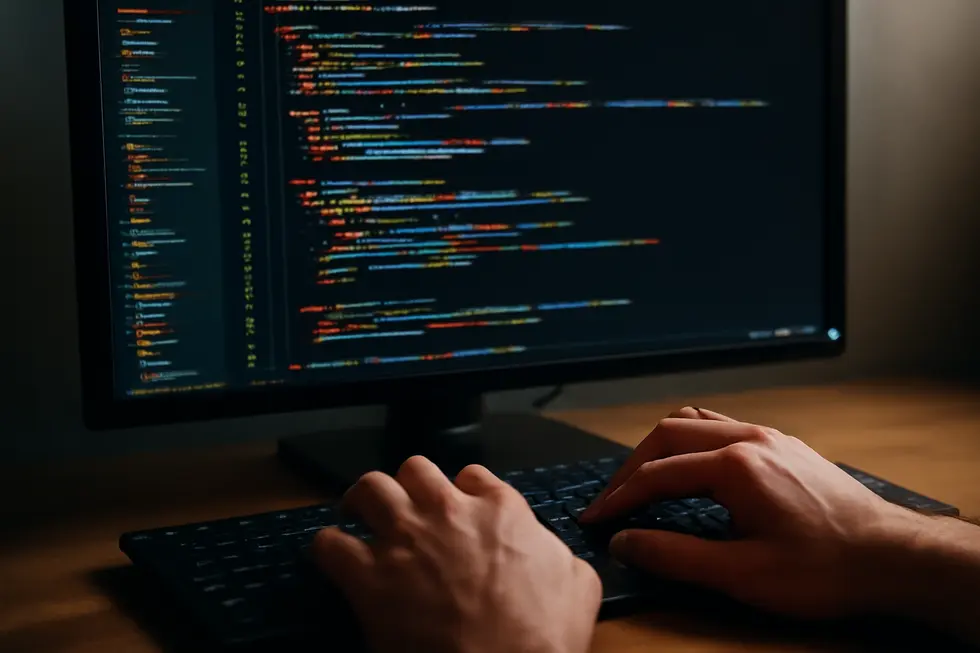
1. Foundations of Copyright Law: How Software Gains Literary Work Protection
Copyright law classifies computer software as a literary work, thereby granting it robust legal protection as an original expression fixed in a tangible medium. This means the actual source code and object code—much like text in a book—are protected from unauthorized copying and distribution. Central to this protection are principles such as originality, requiring the software to embody a minimum degree of creativity, and fixation, whereby the code must exist in a concrete form, whether on digital storage or physical media. Importantly, copyright safeguards only the expression of ideas—the specific lines of code—not the underlying concepts, methods, or algorithms embedded within the software. The copyright holder obtains exclusive rights that cover reproduction, distribution, and the creation of derivative works, empowering them to control how their software is used or shared. These rights automatically arise upon creation, without the need for formal registration, though registration can support legal enforcement. This legal framework aligns with international standards and is complemented by technical protections like Digital Rights Management, which enforce usage terms but do not replace the foundational copyright protections. For a detailed legal perspective, consult Title 17 of the U.S. Copyright Act.
2. Navigating the Boundaries of Copyright Protection for Software Expression
Copyright safeguards the original expression embodied in software, covering source and object code, user interfaces, structural design, and related documentation. This protection treats software as a literary work fixed in a tangible form, preventing unauthorized copying or distribution of these creative elements. However, copyright draws a clear line between expression and ideas. It does not extend to functional aspects such as algorithms, processes, methods of operation, or the underlying concepts of software. Others may independently develop software performing similar functions, provided they do not copy protected expression. This distinction ensures that while software creators’ unique coding is shielded, innovation and competition in software functionality remain free. Moreover, copyright’s time-limited nature means protection eventually expires, allowing works to enter the public domain. In government-funded projects, specialized rights may apply, often granting the government broader usage rights. Understanding these boundaries is key to appreciating copyright’s role in fostering both creativity and accessibility in software development. For legal details on government-related software rights, see the DFARS guidelines.
3. Understanding Exclusive Rights and Licensing Controls in Software Copyright
Copyright law safeguards computer software as a literary work by granting creators exclusive rights to control its reproduction, distribution, adaptation, and public display. This protection covers both source and object code, focusing on original expression rather than functional ideas. Users cannot copy, modify, or share software without explicit permission from the copyright holder. These permissions are often outlined in user licenses, legally binding agreements that specify the scope of use, such as installation limits and restrictions on resale or copying. For example, while Section 117 of the U.S. Copyright Act permits making backup or repair copies, such rights depend heavily on the software’s licensing terms. This dual framework of exclusive rights and user licensing balances creators’ control with users’ lawful usage, ensuring software integrity and compliance. For a deeper legal perspective, refer to Title 17, Section 117 of U.S. Copyright Law. More guidance on software copyright and licensing is available through the UMKC University Libraries guide on software copyright.
4. The Intricacies of Code Expression: How Copyright Shields Software’s Technical Form
Copyright law protects software as a literary work by focusing on the specific expression of code rather than the ideas behind it. Both source code (human-readable programming language) and object code (machine-readable form) are eligible for protection because they represent tangible, fixed expressions. This means developers hold exclusive rights over the actual text strings that direct computer operations, including code structure, user interfaces, and documentation, while abstract ideas, algorithms, and general functional concepts remain unprotected. As a result, others can independently develop software with similar functionality, provided they avoid copying protected code. Emerging technologies, particularly AI-generated code, introduce new challenges since such code may incorporate elements derived from existing copyrighted works, requiring careful adherence to licensing terms. This nuanced balance ensures creators’ original expressions are secured while fostering ongoing innovation. For deeper insights, refer to detailed legal analyses such as those found at patentpc.com.
5. Driving Innovation and Cultural Growth: Economic and Societal Impact of Software Copyright
Copyright protection of software as a literary work fundamentally fuels innovation and cultural development. Granting creators exclusive rights to reproduce, distribute, and adapt their software provides essential financial incentives. This exclusivity fosters investment in research and development, generating revenue streams through licensing and sales while deterring unauthorized copying and piracy. Beyond economics, copyright uplifts societal creativity by granting moral rights, recognizing authorship and encouraging continuous contributions to technology and culture. It also helps maintain quality standards as creators control software use and distribution, benefiting users with reliable products. The limited duration of protection balances creators’ interests with eventual public access, enriching the broader knowledge base over time. This framework sustains a dynamic ecosystem, promoting economic growth in technology sectors and nurturing cultural innovation. For more on foundational protections in intellectual property, see company intellectual property protection. Additional legal guidance is available through the U.S. Copyright Act (Title 17).
Chapter 3: Copyright Definition Computer: Exclusive Rights of Software Creators
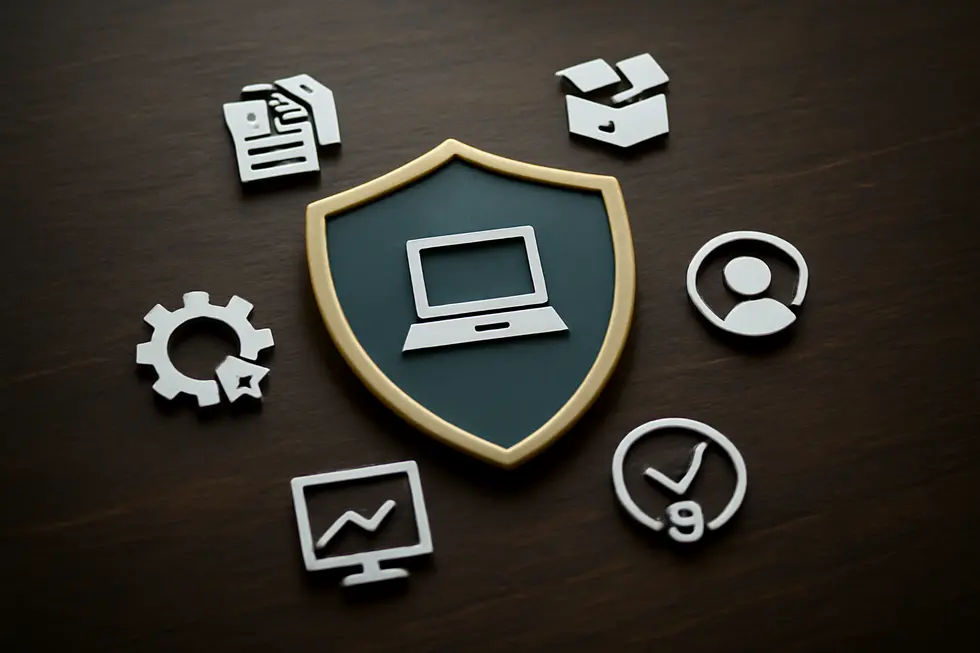
1. Legal Foundations Securing Software Creators’ Exclusive Control Over Their Code
Copyright law grants software creators exclusive rights over their original code and associated materials, protecting the tangible expression but not the underlying ideas or methods. In the U.S., Title 17 defines a “copy” as a fixed medium that can be perceived or reproduced, making software—whether source code, object code, or documentation—eligible for automatic protection upon creation. These rights include reproduction, distribution, and preparing derivative works, allowing creators to control how their software is copied and shared. However, independent developers may create functionally similar software using different code without infringement. Software licenses further regulate user rights, with Section 117 allowing lawful owners to make backup or maintenance copies under specific conditions, often constrained by license terms. This legal framework balances protecting unique coding expression while enabling competition through independent development. For authoritative insights, see patentpc.
2. Balancing Protection and Innovation: The Reach and Boundaries of Software Copyright
Balancing Protection and Innovation: The Reach and Boundaries of Software Copyright
Copyright protection in software extends to the original expression of computer programs, including source code, object code, user interfaces, and related documentation. This legal shield grants creators exclusive rights to reproduce, distribute, and prepare derivative works of their software. However, copyright does not cover the underlying ideas, functions, or algorithms that software embodies. These elements remain free for independent developers to create and implement using different code, preserving competition and innovation within the industry. While copyright safeguards the form in which software ideas are expressed, it excludes protection of procedures, methods, and operational systems. To protect innovative algorithms or technical processes, creators often rely on patents or trade secrets instead. This nuanced scope ensures that while the unique creative expression of software receives exclusive control, the core technological advances remain accessible for further development and improvement. For more details on software copyright protection, visit the comprehensive PatentPC discussion on software copyright.
Additionally, understanding the legal framework that governs software copyrights can be enriched by resources focused on intellectual property rights for businesses, such as those available from trademark2go on intellectual property protection.
3. Balancing Economic Incentives and Moral Protections in Software Copyright
Copyright grants software creators exclusive economic rights, enabling them to control reproduction, distribution, and adaptation of their code. This exclusivity fosters innovation by providing financial rewards through licensing and sales, essential to sustaining software development markets. Equally important are moral rights, which protect the creator’s personal connection to their work. These rights ensure proper attribution and safeguard against harmful modifications that could distort the software or damage the author’s reputation. Unlike patents, copyright shields the expression of software—its source and object code—not the underlying ideas or methods. This dual framework balances commercial interests with respect for the creator’s artistic integrity. Software copyright is effective immediately upon creation, with rights transferable or licensable but bounded by legal exceptions like backup copies. For a deeper understanding of the economic foundations supporting software protection, see resources at Trademark2Go. More on legal aspects can be found in the PatentPC guide on Software Copyright Definition & Exclusive Rights.
4. Protecting Software Innovation: The Technological and Functional Boundaries of Copyright
Protecting Software Innovation: The Technological and Functional Boundaries of Copyright
Copyright safeguards the unique expression of software, such as source code, program structure, user interfaces, and supporting documentation. It does not extend to the underlying ideas, algorithms, or functions, allowing competitors to develop programs with similar functionality through different code. This careful distinction fuels innovation while protecting creators’ original work. Functionally, the law permits limited copying for backup or repair, yet users must respect licensing restrictions that outline use, distribution, and transfer rights. Software creators hold exclusive rights to reproduce, adapt, distribute, and display their work, often lasting the author’s life plus 70 years, or up to 120 years for works made for hire. These protections balance creators’ control with technological progress in the software industry, ensuring original code is legally protected while fostering a competitive environment. For a detailed legal perspective on software copyright, see PatentPC’s software copyright protection overview.
For more on intellectual property rights in business, explore comprehensive guidance at company intellectual property protection.
5. Navigating the Length and Complex Challenges of Enforcing Software Copyright
Software copyright protection endures for the life of the author plus 70 years, or up to 95 years from publication for works made for hire or anonymous creations. This extended duration offers creators and their heirs long-term control over their original code. However, enforcing these rights presents notable challenges. Proving infringement demands clear evidence of both access to the original software and substantial similarity, a process complicated by the intricacies of digital code. The global distribution of software adds jurisdictional hurdles, often slowing enforcement due to conflicting international laws. Additionally, rapid technological advancements—such as open-source projects, cloud computing, and AI software—blur legal boundaries, making it harder to assess infringement. Since copyright protects the source code expression but not underlying functionality, creators must navigate nuanced legal terrain to defend their work effectively. Public registration of copyrights often supports these efforts by serving as formal proof of ownership. These enduring rights strive to balance protecting creators while accommodating the fast-evolving digital landscape. For further details, consult the U.S. Copyright Act (Title 17).
Chapter 4: Copyright Definition Computer: Role and Impact of Software Licensing
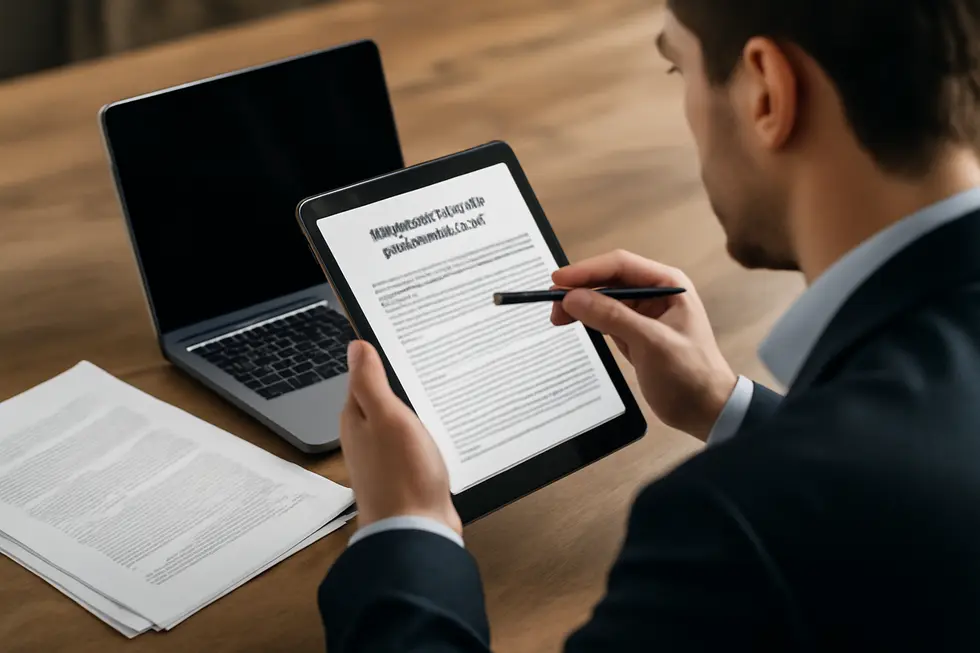
1. Foundations of Software Copyright: Legal Rights and Protections in Computer Programs
Copyright protection for computer software is grounded in U.S. law, specifically Title 17 of the Copyright Act, which safeguards original works fixed in tangible media. This includes source and object code, graphical user interfaces, and accompanying documentation. The law protects the unique expression of software while deliberately excluding underlying ideas, algorithms, and functional methods, which may require patent protection instead. Under Sections 101, 102(b), 106, and 117 of the Copyright Act, copyright owners hold exclusive rights to reproduce, distribute, and create derivative works. Notably, lawful software owners may make backup copies or adaptations strictly for repair or archival purposes, recognizing practical user needs without infringing on rights. This legal framework balances creators’ economic and moral interests by granting exclusive control over software use and distribution for limited terms—typically life of the author plus 70 years or set corporate durations. Meanwhile, software licenses often impose additional usage restrictions complementing statutory rights. Together, these provisions create a robust system encouraging software innovation while ensuring users understand the scope and limits of their rights. For further guidance on software copyright specifics, consult resources like the UMKC Library Guide on Software Copyright.
2. Navigating Software Licensing: Enforcing Copyright Protection for Computer Programs
Copyright safeguards the original expression within computer software, including source code, graphical user interfaces, and documentation, but excludes the underlying ideas or functions. Automatically conferred upon creation, these rights empower creators to control reproduction, distribution, and derivative works. Software licensing acts as a practical enforcement mechanism, outlining specific permissions and restrictions in a legally binding contract between the owner and user. Licenses regulate actions such as how many devices may install the software, copying limits, or prohibition of unauthorized resale. Even freeware remains under copyright and licensing terms. While certain exceptions permit backup copies or repairs, these are contingent on licensing terms. Importantly, copyright does not bar others from independently developing software with similar functions if the code differs. Thus, licensing converts copyright’s abstract rights into concrete user obligations, ensuring intellectual property protection operates effectively within the software ecosystem. For deeper insight into software copyright law and licensing, see resources like the UMKC Library guides.
3. How Software Licensing Drives Innovation and Revenue in Copyright Protection
Copyright law safeguards the unique expression of software code, granting creators exclusive rights to reproduce, distribute, and modify their work. These rights empower developers to control the use of their software through licensing agreements, which define precise terms for usage, copying, and redistribution. Such licenses are essential legal tools that prevent unauthorized use and piracy, thereby preserving software integrity and market value. By ensuring exclusivity, licensing enables creators to monetize their innovations—whether through direct sales, subscriptions, or hybrid models—generating sustained revenue streams. This financial incentive not only compensates development costs but actively encourages continuous innovation and healthy industry competition. Moreover, licensing helps maintain quality standards across the market by regulating distribution and use. Together, copyright and licensing construct a vital economic framework that fuels the ongoing evolution of software technology and supports its commercial success. For a detailed explanation of software copyright and protection, visit PatentPC.
4. Enforcing Rights and Combating Piracy: How Software Licensing Protects Computer Copyrights
Copyright law safeguards original software by protecting its code, interfaces, and documentation as expressions fixed in a tangible form. However, it is software licensing that brings this legal protection into practical effect, clearly defining how users may interact with the software. These licenses establish terms on usage, copying, and distribution, enabling creators to control their work beyond mere legal ownership. By granting exclusive rights to reproduce and modify software, licensing prevents unauthorized use and stops piracy, discouraging infringement through legal remedies like damages and injunctions. Furthermore, licenses maintain software integrity by restricting unauthorized changes and redistribution, while allowing limited exceptions such as backup copies under strict conditions. This framework not only protects developers’ creative efforts but also supports innovation and revenue generation. For deeper insights on software copyright and licensing, see the comprehensive explanation at PatentPC. For additional context on legal protections, explore copyright and contracts.
5. Shaping Innovation and Competition: The Societal Influence of Software Licensing in Copyright
Copyright protection in software secures the expression of code and related materials, not the ideas or functionality behind them. This distinction allows developers to innovate independently without infringing copyright, fostering healthy competition. Software licenses extend this protection by defining how users may use, modify, or distribute software—acting as contracts that clarify rights and restrictions. These licenses enable creators to monetize their work while controlling its spread, thus encouraging ongoing innovation and investment. The result is a competitive market where original creators benefit economically, piracy is deterred, and alternatives can emerge through distinct implementations. This balance promotes both societal progress and legal clarity, guiding businesses in managing software usage responsibly. For further insights, see copyright a contract. More detailed guidance is also available at patentpc.com.
Chapter 5: Understanding Copyright Definition in Computer Works: Duration and Terms of Protection

1. Defining the Boundaries: How Copyright Protects Software Expression but Not Ideas or Algorithms
Copyright for computer software safeguards the original expression fixed in a tangible form, such as source code stored on digital media, but it does not extend to the underlying ideas, algorithms, or functional methods behind the software. Recognized as a literary work under copyright law, software’s protection emphasizes the specific code, object files, user interfaces, and documentation. The law explicitly excludes protection for ideas or methods themselves, as outlined in Section 102(b) of the Copyright Act, ensuring only the expressive elements are protected. Copyright holders retain exclusive rights to copy, distribute, modify, and publicly display the software, while users’ rights to make backup or repair copies are typically governed by licenses in addition to legal provisions. These licenses often govern use restrictions such as installation limits and resale constraints. For a deeper look into software copyright and its limitations, consult PatentPC’s software copyright protection overview. Also consider the role of licensing in compliance alongside copyright law, as detailed in resources like the terms of copyright company name protection.
2. Understanding the Legal Timeframes and Scope of Software Copyright Protection
Copyright law automatically protects original software once fixed in a tangible form, such as stored code. This protection grants the author exclusive rights to reproduce, distribute, adapt, and publicly display the software. Typically, these rights last for the author’s lifetime plus 70 years in many jurisdictions, including the United States, though some regions apply a 60-year posthumous term.
Software is classified as a literary work, meaning the copyright covers the specific expression of the code, not the underlying ideas or functional methods. Users often operate under licenses that further define permissible use, including allowances for archival or backup copies when allowed. Unauthorized copying or adaptation constitutes infringement.
This legal framework balances creators’ exclusive control with public benefit, encouraging innovation while protecting intellectual property. For those seeking deeper insight into software copyright, the U.S. Copyright Act (Title 17) offers comprehensive provisions.
Learn more about how such protections intersect with broader intellectual property from company intellectual property protection.
3. Economic Impact and Licensing Dynamics of Computer Software Copyright
Copyright protection in computer software grants creators exclusive rights over their original code, interfaces, and documentation. These rights enable software developers and companies to economically benefit by licensing or selling their products, motivating continuous innovation. By controlling reproduction and distribution, copyright discourages unauthorized modifications and piracy, preserving software integrity and market competitiveness. However, licensing agreements shape specific user permissions and restrictions, often limiting installations or resale despite copyright’s broader rights. Notably, Section 117 of the U.S. Copyright Act permits users to create backup or repair copies if the license allows, balancing creator protections with reasonable user needs. Ultimately, copyright safeguards the tangible expression of software while licenses govern practical use, maintaining a framework that supports creators’ economic interests within regulated user access. For more on the legal definitions and rights involved, consult detailed guidance from WIPO.
4. Understanding Copyright Protection of Software: Distinguishing Expression from Functionality
Copyright law protects the original expression of computer software while excluding the underlying ideas or functions. This means source code, object code, user interfaces, and documentation—fixed in a tangible form—are safeguarded as literary works. However, others may develop different code achieving the same software functions without infringement. This distinction encourages innovation and competition within clear legal boundaries. Legal frameworks such as the U.S. Copyright Act and the UK Copyright, Designs and Patents Act 1988 define these protections, granting exclusive rights over copying, adapting, and distributing the original expression for a limited period. Technological advances and international treaties, like the Berne Convention, have adapted these laws to the digital age, harmonizing protection while respecting territorial jurisdiction. Software licenses often complement copyright by specifying permissible usage. For deeper insights, refer to the Copyright, Designs and Patents Act 1988 and guidelines from intellectual property bodies like WIPO.
5. The Global Influence of Society and Politics on Computer Copyright Duration
Copyright protection for computer software extends beyond legal definitions, deeply influenced by societal values and geopolitical dynamics. Technological advances continuously reshape what constitutes protectable content, especially as digital distribution makes unauthorized copying easier across borders. Meanwhile, nations maintain varied copyright laws reflecting distinct legal traditions, cultural perspectives on intellectual property, and economic interests. International treaties strive to harmonize these differences but still allow countries to define specific terms and enforcement methods according to their priorities. This results in copyright duration varying—commonly life of the author plus 70 years, but extending up to 95 or 120 years for works created anonymously or by corporations. Societal views also shape exceptions like fair use, balancing creators’ rights with public access to knowledge. Understanding this interplay reveals how copyright terms for computer works adapt amid technological progress and diverse geopolitical landscapes. For those interested in deeper legal nuances, exploring common law trademark protection offers additional insight. Further comprehensive guidance can be found via the World Intellectual Property Organization (WIPO).
Chapter 6: Copyright Definition Computer: Regulatory and Institutional Resources
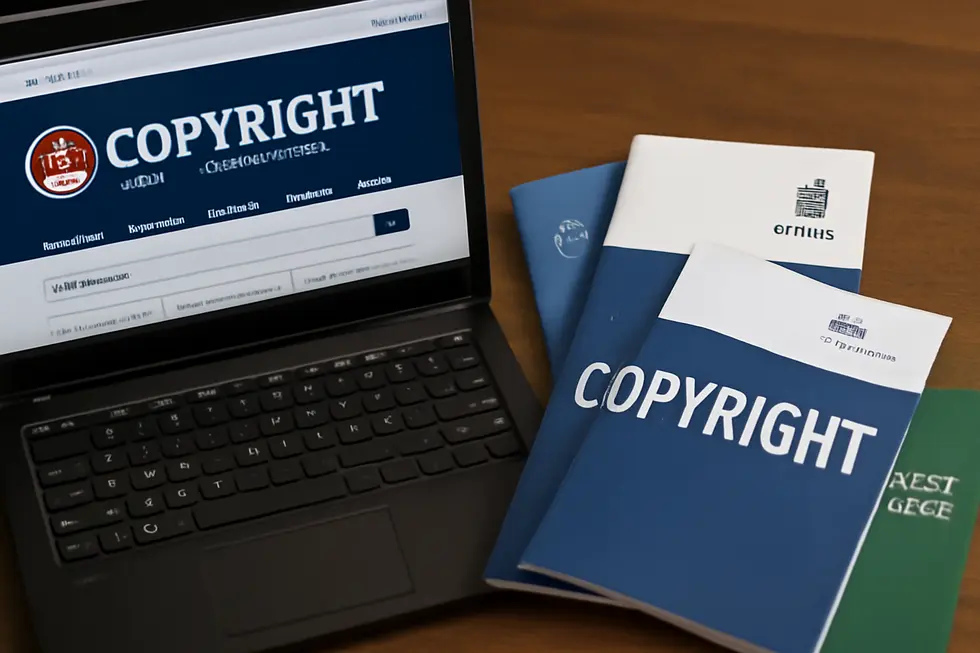
1. Navigating Legal Foundations and Institutional Roles Protecting Computer Software
Copyright law grants creators exclusive control over the original expression fixed in tangible forms like software code, distinguishing protected literary content from unprotected ideas or methods. Computer programs, treated as literary works, are safeguarded through statutory rights that regulate copying, distribution, and adaptation. Purchasers benefit from limited legal allowances for backup or repair copies under Title 17 U.S.C. §117, but software licenses often impose stricter conditions on usage and transfer, underscoring the importance of understanding licensing terms.
This legal framework finds its roots in the U.S. Constitution’s Intellectual Property Clause, guiding Congress to promote innovation by granting limited rights to authors. Courts balance incentives for creativity against emerging technologies, including challenges posed by AI. Institutional roles extend to libraries and information centers that navigate fair use provisions, enabling access while respecting copyright protections. For a comprehensive view of lawful software copying and licensing, Title 17 U.S.C. §117 provides authoritative guidance.
For further details, visit the resource on copyright contracts and consult the official U.S. Copyright Law Title 17.
2. Licensing Agreements: Bridging Copyright Law and Practical Use in Computer Works
Licensing agreements are essential in transforming the exclusive rights granted by copyright law into actionable permissions for computer software and related works. They legally authorize specific uses of copyrighted materials without transferring ownership, detailing conditions such as scope, duration, fees, and restrictions. This ensures creators retain control while enabling others to use, distribute, or adapt the software within agreed limits. These contracts also define exclusivity, compensation mechanisms like royalties, and dispute resolution processes, reinforcing both economic and creative interests. Within digital environments, licensing agreements address complex challenges like digital rights management and fair use, ensuring lawful access and protection consistent with regulatory and institutional standards. As binding legal instruments, they reconcile copyright’s theoretical framework with practical realities, facilitating innovation, commercialization, and quality assurance across diverse technological contexts. For further guidance on securing such agreements, resources like UpCounsel’s guide on licensing agreements offer detailed insights. Additionally, exploring copyright contract essentials can deepen understanding of these critical legal tools.
3. Ensuring Access and Compliance: The Role of Libraries and Digital Repositories in Copyright Management
Libraries and digital repositories serve as vital custodians of digital scholarly content, balancing long-term preservation with lawful access under copyright frameworks. Operating within the scope of Title 17 of the U.S. Code, these institutions apply specific exceptions, such as those in Section 108, allowing limited reproduction for preservation, private study, and interlibrary loans. However, digital copying restrictions ensure compliance with copyright holders’ rights. Institutional policies reflect critical copyright provisions—including fair use, the TEACH Act, and the Digital Millennium Copyright Act—to guide permissible use and sharing of materials. Moreover, libraries implement international standards like OAIS and PREMIS to maintain metadata integrity, discoverability, and interoperability. Together, these regulatory resources and stewardship roles enable libraries and repositories to safeguard digital academic outputs responsibly while facilitating access and supporting ongoing scholarly communication. For detailed legal guidance, consult the U.S. Copyright Act (Title 17).
4. Global Treaties and National Laws Shaping Computer Copyright Protections
International copyright protections for computer software hinge largely on treaties like the Berne Convention, which guarantees automatic rights across member nations without formal registration. This ensures that software code created in one country receives recognition and protection globally. Complementing these international standards, national laws adapt to technological advances—such as the UK’s Copyright, Designs and Patents Act 1988—which explicitly addresses authorship of computer-generated works, including those produced with AI assistance. In the United States, copyright arises upon fixation of source code, while registration enhances enforcement capabilities, including access to federal courts. Beyond copyright treaties, emerging regulations like the UK’s Digital Markets Act introduce competition considerations impacting digital content governance. Together, these instruments form a complex, yet coordinated, regulatory framework that secures creators’ exclusive rights while evolving to address innovations in software development. For detailed U.S. copyright regulations and registration benefits, refer to the U.S. Copyright Office resources.
5. Understanding Copyright Duration and Limitations for Computer Software and Digital Works
Copyright Duration and Limitations: Legal Framework for Computer Software
Copyright grants creators exclusive control over their works for a limited time, typically lasting the author’s lifetime plus 70 years in many jurisdictions like the United States. After this period, the works enter the public domain. Specific rules apply to computer software, often treated as literary works, but with additional licensing considerations. Limitations such as fair use enable copying or use for research, criticism, or education when done reasonably and without market harm. In governmental contexts, software rights can be time-limited, as with clauses that restrict usage and disclosure for a defined term before granting broader rights. Institutional resources, including intellectual property offices and library guidelines, provide essential clarity on these durations and exceptions, supporting lawful use of copyrighted software and digital content.
For further authoritative details on copyright duration and limitations, consult resources like the Intellectual Property Office (UK) and Gov.UK copyright duration guidelines.
Final thoughts
Understanding copyright in the context of computer software equips business owners with the tools to protect their digital intellectual property effectively. From the legal foundations that define what qualifies for protection to the exclusive rights granted to creators, knowledge is key. Comprehending software licensing agreements clarifies permitted uses and restrictions, while awareness of copyright duration ensures long-term protection strategies. Additionally, familiarity with regulatory and institutional resources offers valuable support and guidance. Armed with this comprehensive perspective, business owners can safeguard their software assets proactively, maintain control over their creations, and leverage intellectual property as a strong competitive advantage in today’s digital economy.
Your IP is the foundation of your success – let’s protect it together before it’s too late. We can’t wait to help you turn your ideas into legally secured assets.
About us
undefined
